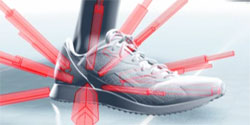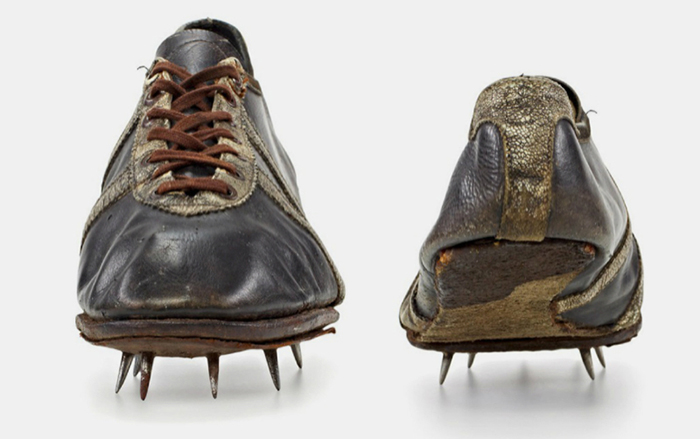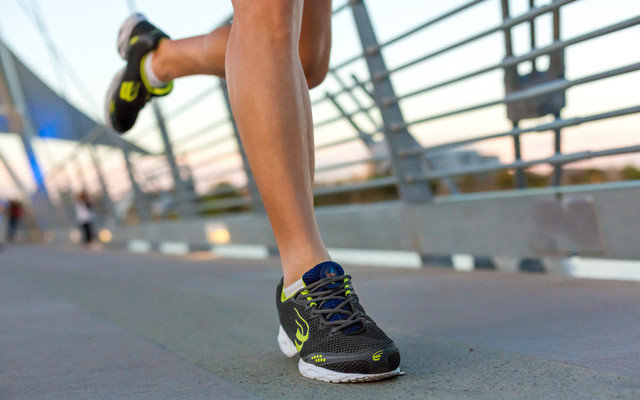Pronation of the foot. How to determine?
 When running, the human body is subjected to excessive stress, so it is extremely important to ensure an appropriate balance of depreciation and stability to reduce the risk of injury.
When running, the human body is subjected to excessive stress, so it is extremely important to ensure an appropriate balance of depreciation and stability to reduce the risk of injury.
With a special insert in the sole (Wave) provides excellent cushioning due to the distribution of shock load over the entire surface area. The stability of the technology is achieved due to the difference in levels between the outer and inner surfaces of the shoe. This technology does not allow the sole to compress in high pressure areas. The main parameters of shock absorption and stability of Wave technology allow you to choose the best option for any type of running. The result is lightweight ultra-modern sports shoes for professional sports.
The nature of the pronation of the foot is the main parameter when choosing sneakers. It is recommended to determine which foot arch you have, as this is directly related to how you run, and can be a good starting point for choosing the right shoe model.
If you have a normal deflection of the foot, you are most likely a neutral pronator and you can use stabilizing type sneakers (SUPPORT) with medium pronation control. Runners prone to flat feet are usually hyperpronators, and they should pay attention to CONTROL running shoes for greater control of pronation. Athletes with a high arch of the foot, in turn, are hypopronators and they are recommended to use neutral-shock absorbing (NEUTRAL) shoes, which contributes to a more natural movement of the legs.
Once again, we draw your attention to the fact that stabilizing (SUPPORT) shoes are suitable for normal (neutral) pronators, and not neutral (NEUTRAL) shoes, as one might easily think.
How to determine your pronation?
The simplest and most affordable way is the wet test. In order to fulfill it, you need to take a sheet of thick paper, put it on the floor and, having wet your bare feet, stand on the sheet for about half a minute. After that, get off the sheet and draw a pencil around the borders of the wet spots remaining on the paper. After several attempts, you should get something that resembles one of the images below in the picture.
Neutral pronator (SUPPORT)
When running, the outside of the heel makes contact with the surface. The foot rotates inward, about 15%, and reaches full contact with the ground, while maintaining body weight without any problems. Deflection of the foot provides optimal load distribution from impact on the surface. This movement is called “pronation” and it is very important for proper depreciation. At the end of the running cycle, repulsion occurs evenly throughout the forefoot.
NEUTRAL – HypoprotectorHypopronator (NEUTRAL)
Again, contact with the ground occurs on the outside of the heel. But the deflection of the foot inward occurs less than 15%, i.e. this movement is less than for runners with a low or normal arch of the foot. Thus, the impact forces are concentrated on a smaller foot area (mainly the outer part) and are not distributed quite efficiently. At the repulsion stage, small toes work from the outside of the foot.
Hyperpronator (CONTROL)
As with “normal pronation,” the running step begins by touching the surface with the outside of the heel. However, the leg bends inward by more than the ideal 15%. This phenomenon is called hyperpronation. This means that the foot and ankle have some problems in stabilizing the body, while shock absorption is less effective. The repulsion from the ground in the final phase of the running cycle occurs mainly due to the big and second toes, which have to do all the main work.




